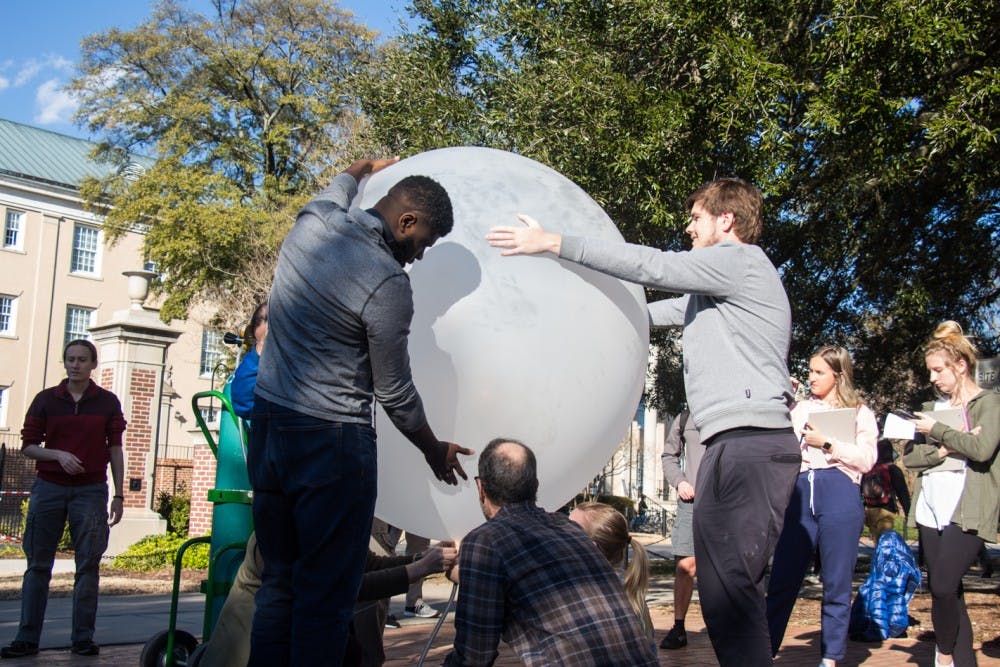Students from GEOG 202: Weather and Climate partnered with the geography department to launch a weather balloon in front of Thomas Cooper fountain on Jan. 28 to gather readings from the atmosphere, which they will analyze in their lab.
“It’s a great teaching tool; a lot of meteorology programs use them,” said April Hiscox, associate professor in the geography department. “Weather balloons are launched around the globe twice a day, everywhere, all at the same time. So it’s really one of the few ways where we can get high detailed information of the atmosphere as we move away from the surface.”
Hiscox, other geography professors and teaching assistants brought equipment to campus and involved students in the process of blowing up the weather balloon and launching it into the atmosphere.
“The book doesn't help me at all, but seeing a hands-on and in-person how this works, it’s a good learning tactic,” said Deja Bryant, first-year criminology and criminal justice student.
The weather balloon, technically known as a radiosonde, travels into the atmosphere measuring the atmosphere and communicating the levels. This data helps meteorologists understand changes in the atmosphere and weather. The balloon will collect data until it loses connection with the computer on the surface or the balloon pops due to the increased pressure in the atmosphere.
“We’ll use it in class to show how we measured what we taught them last week, and then we also send it over to the National Weather Service just ‘cause it helps inform whatever extra information they could have 'cause they only get soundings twice a day,” Hiscox said. “So when we do one here we can send it to them for extra forecasting knowledge.”
In her class, Hiscox gives an overview of topics related to weather and climate both scientifically and socially. Throughout the semester, her class will launch two or three weather balloons to continue understanding the complexities of the atmosphere.
“I think there’s a lot of value in being able to see what the atmosphere is,” Hiscox said. “This is how we measure the atmosphere, and we always show plots of data, but there’s value in being able to see it happen as it is, so now they can understand, 'okay this is about 14 degrees C and that’s what happens when you move away from the surface.'”
Students in GEOG 202 enjoy Hiscox’s hands-on approach to geography and meteorology because they are getting practical experience they can apply to everyday life.
“My favorite part of the class is probably this,” said Brandon Lockman, a first-year media arts student. “They have us do little weather journals and stuff like that so we get to kinda observe the weather and sooner or later, we’ll be able to like, see and diagnose what’s going on — actually understand more about our everyday weather. That’s going to be really cool.”
Austin Swindler, a second-year mathematics student, is one of several students in the class that is not pursuing a degree in geography. However, Swindler finds a greater appreciation of the world through studying geography through this hands-on method.
“It’s just really cool to know about the things we see every single day, weather, climate and all that,” Swindler said. “What’s actually behind the scenes of it, you could say.”

